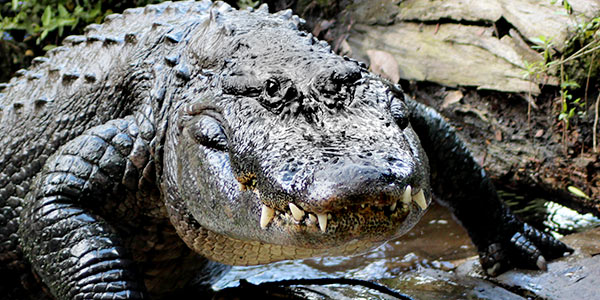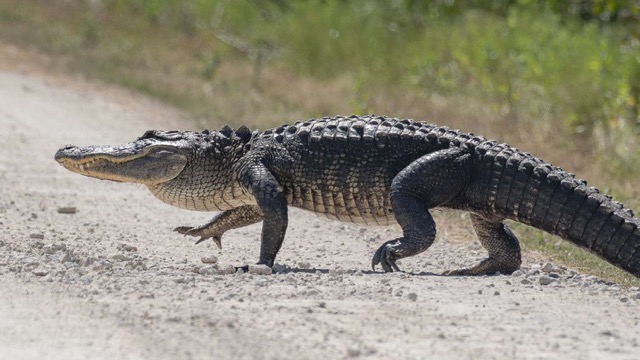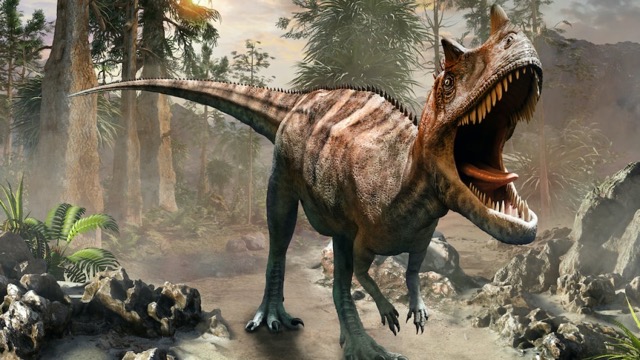Are Alligators Dinosaurs? Mesozoic Era Gives A Clue!
- 1.3 k
- alligators,reptiles
Are alligators dinosaurs? The answer to this question is not that simple. It requires research on the relationship between alligators and dinosaurs. We must go back millions of years in the reptile family tree to the Mesozoic Era to comprehend why alligators are not dinosaurs. It will also help us to underestimate how the two groups of creatures relate to each other.
Additionally, we’ll need to learn a little bit more about alligators. So, let’s know more about, “are alligators dinosaurs?” in this super in-depth guide.
Do Gators Qualify As Dinosaurs?

Are alligators dinosaurs? Despite not being dinosaurs, alligators and other crocodilians are the dinosaurs’ closest living relatives (apart from birds, which are dinosaurs). Alligators are more closely connected to dinosaurs than they are to other surviving groups of reptiles, such as snakes and turtles, even though they are neither dinosaurs nor their descendants.
We have seen that crocodiles are reptiles and alligators are not dinosaurs. However, they are closely related.
Alligators are all sorts of reptiles. They live in the ocean, and they can swim very fast. Also, they have some interesting traits like camouflage and many others that makes them different from other animals. They are quite beautiful in nature and are well known for their large size – up to 10 feet long!
What Are Alligators? Are They Crocodilians?

First, it is important to clear the confusion about alligators and crocodiles. In this discussion, we can call alligators crocodiles because crocodiles are also reptiles like alligators.
Alligators are super tough, reptilian animals that need to eat lots of stuff and can stay away from humans for a long time because they don’t like people.
Crocodiles or alligators are the largest freshwater reptiles. They have very deep bodies with long tails that would be too weak to support an adult alligator. Their head is short and broad. Their snout is long with sharp teeth that can pierce through whale blubber and seal fat with ease.
The most notable feature of this adaptation is their ability to hold their breath for up to 45 minutes at a time when feeding on crustaceans, termites, or floating larvae from other aquatic habitats – called “aquatic diet.”
They can do this because they do not possess much lung tissue because it is poorly used by a terrestrial lifestyle. It only burns about 1% of its own body weight per hour.
Alligators can store a vast proportion of their own body weight in fat, which helps them to survive periods of time without food. These fat reserves have been theorized to allow alligators up to 20 years in captivity without any significant loss of body mass. Crocodiles or alligators’ primary diet is fish, especially freshwater fish such as catfish, bass, and crappie. However, they also feed on terrestrial insects, frogs, and other reptiles.
What Are Dinosaurs?

The answer is simple – they were prehistoric creatures who had long necks and limbs that supported their giant bodies. Their legs probably had four to five digits at the back. They made them powerful swimmers with necks that could reach up to three feet above the water’s surface. Dinosaurs roamed this planet for 65 million years until they became extinct 66 million years ago due to their animal-like death through massive volcanic eruptions such as Mount Etna in Sicily or in Europe’s Cretaceous period.
Are Alligators Dinosaurs? Exploring The Mesozoic era!
Three-time periods make up the Mesozoic Era.
- The Triassic Period, which started around 252 Mya, was the first of these (million years ago).
- The Jurassic Period, which started 201.3 Mya after that, followed.
- The Cretaceous Period, which started 145 Mya, was the third and last stage of the Mesozoic Era.
Because reptiles dominated the land, the sea, and throughout a significant portion of the Mesozoic Era, we call it “the Age of Reptiles.”
Despite their appearance during the Mesozoic Era, mammals at the time were primarily small, nocturnal animals.
Are Dinosaurs & Alligators Archosaurs? Are Alligators Dinosaurs?

We’ve discovered that archosaurs include both alligators and dinosaurs. At the start of the Triassic Period, the earliest archosaurs made an appearance (and their ancestors, the Archosauromorphs, appeared millions of years before that).
These two creatures are archosaurs. The dinosaur is an avemetatarsalia, whereas the alligator is a.
The Mesozoic Era saw great success for the reptile phylum Archosauria.
Pseudosuchia and Avemetatarsalia were the two major subgroups that emerged from Archosauria during the Triassic Period. Certain pseudosuchians and some avemetatarsalia would later develop into crocodiles and dinosaurs, respectively.
This is significant because it indicates that an archosaur, the ancestor of alligators and dinosaurs, existed at some point during the Triassic Period.
Final Verdict
Are alligators dinosaurs? The answer is hidden in the Mesozoic era because this is the time in which the ancestors of alligators and dinosaurs existed. These ancestors were known as archosaurs. We can easily predict that it was the Triassic period.
This is a small introduction to the Mesozoic era; the time in which the ancestors of alligators and dinosaurs existed.
Archosaurs were in existence during the Jurassic and Cretaceous periods. Archetypal evidence of dinosaurs can be found in fossils known as theropods, ornithopods and. These fossils all belonged to dinosaur families that existed during this time frame.
So, the super in-depth answer to “Are Alligators Dinosaurs?” is that they are closely related in evolutionary history. It means they do have some similarities because they share the same ancestors.
In other words, alligators and dinosaurs have one same ancestor. If you go deep enough in both groups’ family trees, you will find the same creature: an archosaur that lived at the start of the Triassic Period.
